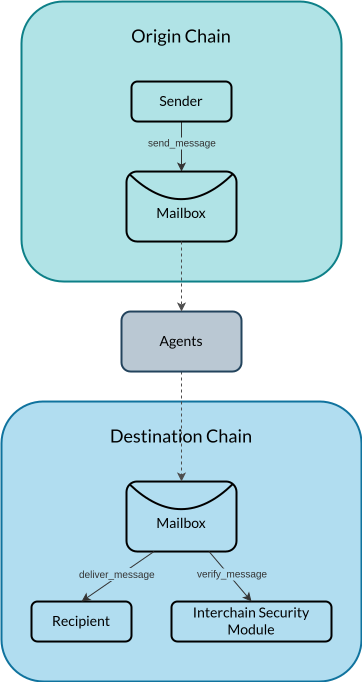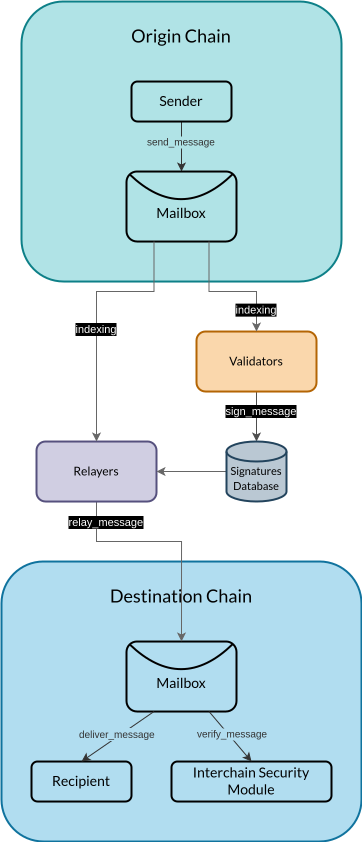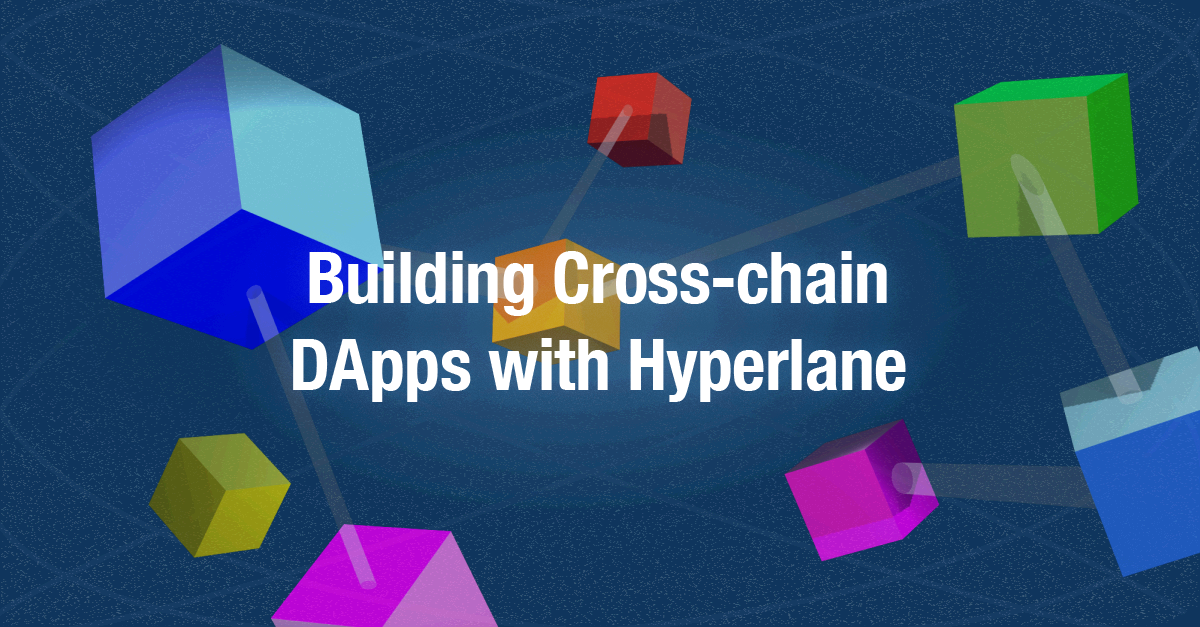A cross-chain bridge is a decentralized solution that connects different blockchain networks, allowing assets and data to be transferred between them. It acts as a crucial connection point, enabling communication and interaction between blockchain ecosystems that would otherwise be isolated from each other.
Unlike a general blockchain bridge, which can refer to various types of interconnecting solutions, a cross-chain bridge is specifically designed to facilitate the transfer of assets or data across different chains. Its purpose is to overcome the limitations of individual blockchains. It aims to enhance their capabilities by enabling the movement of assets between them.
This blog will cover a high-level overview of the Hyperlane protocol. This protocol allows us to develop cross-chain DApps using their permissionless interoperability layer. This layer works across various blockchain environments.
Importance of Cross-chain Bridges
The primary characteristic that sets a cross-chain bridge apart is its ability to establish trust and ensure secure transfers of assets or data between diverse blockchain networks. This is accomplished by employing a combination of cryptographic techniques, smart contracts, and other protocols. These measures guarantee the integrity, security, and transparency of cross-chain transactions.
Cross-chain bridges are essential for expanding the potential applications and adoption of blockchain technology. They facilitate the seamless exchange of assets, such as tokens or NFTs, between different chains, thereby enhancing interoperability and enabling new possibilities within the blockchain ecosystem.
Hyperlane
Hyperlane is a permissionless interoperability layer. It enables smart contract developers to send arbitrary data between blockchains. This allows developers to create interchain applications. These applications can move tokens, execute function calls, and perform other tasks. Thus, making them accessible to users on any blockchain.
Users interact with the Hyperlane protocol through Mailbox smart contracts. These contracts provide an on-chain messaging interface for sending and receiving interchain messages. Hyperlane offers a modular approach to security. It allows applications to choose from a selection of Interchain Security Modules (ISMs). This customization helps in securing their integration with the Hyperlane messaging interface.

Mailbox
The Hyperlane Mailbox smart contracts provide an on-chain API for sending and receiving interchain messages. A Mailbox contract is deployed on every chain supported by Hyperlane.
Moreover, the network of Mailboxes serves as the connective tissue between blockchains. Developers leverage this network to create interchain applications and integrate interchain functionality into their existing applications.
Interchain Security Module
Hyperlane secures its operations through Interchain Security Modules (ISMs). ISMs, which are smart contracts, verify that interchain messages delivered on the destination chain originated from the correct source chain.
Furthermore, ISMs are fully customizable. Developers have the flexibility to craft their own ISMs according to the specific requirements of their applications.
For instance, application developers can design ISMs to adapt security models based on message content. They might implement a security model prioritizing safety over latency and gas costs for high-value and infrequent messages (e.g., governance). Conversely, for lower value and more frequent messages, a security model favoring latency and gas costs over safety can be utilized.
One of the most commonly employed ISM types is the MultisigISM. These ISMs validate that a specified number, denoted as m out of n, of validators have endorsed the validity of a given interchain message.
Agents
The Hyperlane protocol relies on decentralized off-chain agents to observe, sign, and transmit messages actively.
For convenience, Hyperlane implements these agents as a set of binaries written in Rust, ensuring smooth operations.
- Validators play a crucial role in attesting to the validity of Mailbox messages that use the Multisig ISM, making their signatures available to a relayer for further action.
- Relayers, on the other hand, take charge of aggregating off-chain metadata for the Interchain Security Module interface and efficiently delivering messages to their designated recipients.

Validators
Validators observe the Mailbox contract and sign a Merkle root, if required, to facilitate message transmission to remote chains.
In contrast to many other protocols, Hyperlane lacks a dedicated validator set. Instead, anyone is free to run their own validator, provided that the receiver contract specifies a Multisig ISM that includes their validator.
Relayer
A relayer ensures the delivery of messages to their recipients. Relayers play a permissionless but integral role in the Hyperlane protocol. Anyone can operate a relayer.
Relayers actively relay messages between two or more chains. They monitor the origin Mailbox contracts, detecting new messages. Upon detecting a new message, the relayer queries the destination chain to ascertain the recipient's Interchain Security Module (ISM).
Subsequently, the relayer gathers the required metadata for that ISM. The metadata collection process varies depending on the ISM and may involve obtaining signatures from one or more validators, Merkle proofs, and zero-knowledge proofs.
Finally, the relayer delivers the message to its recipient by invoking the Mailbox on the destination chain with the previously gathered metadata.
Conclusion
Cross-chain bridges play a crucial role in expanding the potential applications and adoption of blockchain technology. They enable the seamless exchange of assets, such as tokens or NFTs, between different chains. Facilitating these exchanges, cross-chain bridges like the Hyperlane protocol not only enhance the interoperability between diverse blockchain ecosystems but also unlock new possibilities for developers and users alike. As the blockchain landscape continues to evolve, cross-chain bridges are pivotal in fostering a more connected and functional blockchain ecosystem, paving the way for a more integrated, efficient, and user-friendly blockchain future.
Software Engineer
If you like this article, we're sure you'll love these!
Smart Sensor - Case Study
Read all about how we reinvented the Smart Building Industry using our IOT, design and development expertise.
Decentralized Stable Coins
Explore MakerDAO's impact on DeFi and stablecoins, ensuring DAI's stability and robust governance.
